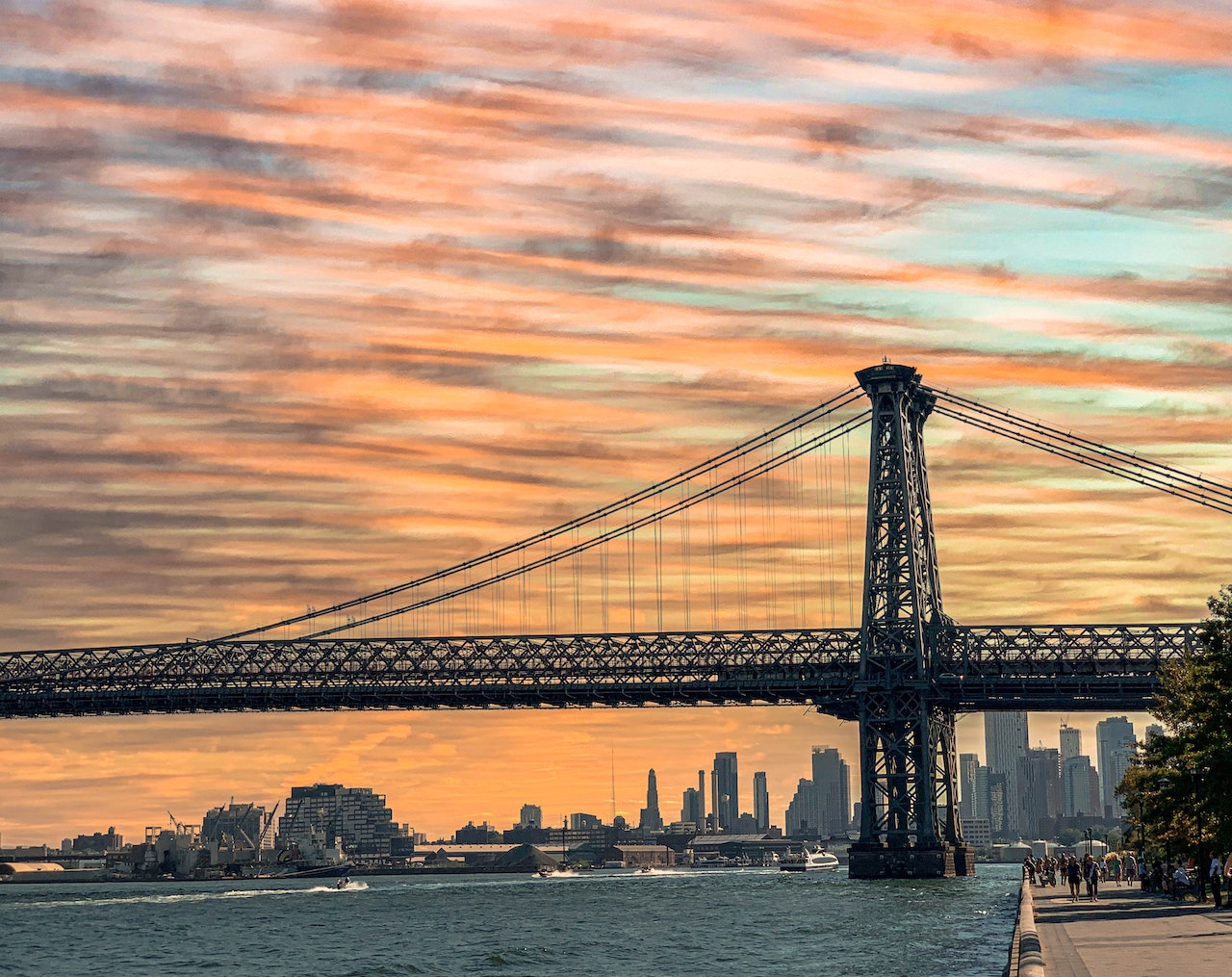Williamsburg Bridge
West Pier
Home > New York State Photographs > New York > Williamsburg Bridge West Pier

The Williamsburg Bridge stood like a majestic sentinel between Brooklyn and Manhattan, a symbol of modernity and progress against the backdrop of a slowly changing skyline. The sun cast its golden glow on the steel cables that crisscrossed the span, creating a stunningly beautiful web of light and shadow.
The bridge hummed with activity as if it had a life of its own. Bicyclists and pedestrians clambered across the span, their shoes clacking against the pavement. Cars and trucks, large and small, crawled along the road, leaving behind a stream of exhaust. Below them, ferries and recreational boats ploughed through the waters of the East River, humming a low, steady rhythm that blended in with the general noise of the city.
On the Manhattan side, the bridge was flanked by two huge piers that reached high into the sky, providing a stable base from which the bridge seemed to extend outward into the heavens. The bridge's girders, towers, and suspension cables all conspired to create a powerful yet delicate structure that spoke of the human capacity for aspiration and accomplishment. From either side of the river, the bridge was a visible reminder of the ever-changing nature of the city and of its citizens' ingenuity and ambition.
Williamsburg Bridge
The Williamsburg Bridge is a historic suspension bridge that spans the East River in New York City, connecting the neighborhoods of Lower East Side in Manhattan and Williamsburg in Brooklyn. Here are some key points about the Williamsburg Bridge:
Construction
The construction of the Williamsburg Bridge began in 1896 and was completed in 1903. It was designed by Leffert L. Buck and Henry Hornbostel, with Leffert L. Buck serving as the chief engineer.
Structure and Design
The bridge is a suspension bridge with a total length of about 7,308 feet (2,227 meters). Its main span, which is the distance between the two main towers, is approximately 1,600 feet (487.68 meters). The bridge features two main towers and a central span that allows for the passage of ships beneath it. The bridge features a steel truss for bicycle, pedestrian, subway, and vehicular traffic.
Purpose
The construction of the Williamsburg Bridge was driven by the need for additional transportation links between Manhattan and Brooklyn to accommodate the growing population and industrialization in the late 19th century.
Connections
On the Brooklyn side, the bridge connects to the Williamsburg neighborhood, providing important access between Brooklyn and Manhattan. On the Manhattan side, it connects to the Lower East Side.
Significance
The Williamsburg Bridge played a crucial role in the development and urbanization of both Manhattan and Brooklyn. It facilitated the movement of people and goods, contributing to the economic growth and cultural exchange between the two boroughs.
Transportation Modes
The bridge has lanes for vehicular traffic, pedestrian walkways, and subway tracks. The subway tracks are used by the J, M, and Z trains of the New York City Subway system.
Renovations and Maintenance
Like many historical structures, the Williamsburg Bridge has undergone (significant) renovations and maintenance to ensure its structural integrity and safety. The original suspension cables were not galvanised and were severely corroded. They have now been replaced as has other corroded metal. Upgrades have also been made to improve the bridge's capacity and resilience.
Aesthetics and Views
The bridge is known for its distinctive, graceful design, and it offers impressive views of the Manhattan skyline and the East River. It has become an iconic part of the city's landscape.
The Williamsburg Bridge remains an important transportation artery in New York City and stands as a testament to the engineering and architectural achievements of the early 20th century. It continues to serve as a vital link between Manhattan and Brooklyn, supporting the movement of people and goods across the East River.


